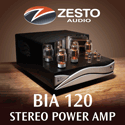|
|
You are reading the older HTML site
Positive Feedback ISSUE 75
danacable Diamond Interconnects as reviewed by John Zurek
The cable game has always been a bit of a dice-roll. So many brands, alloys, and configurations make the choices daunting to say the very least. While you need to hear what a cable sounds like in your system, it's damn near impossible to have even a small choice of cables at your disposal to try in your room with your system. I've been fortunate—but maybe not lucky until lately—to have heard many speaker and interconnect cables over the years. And, although at times I felt that my system was sounding pretty good, in my mind there was always a cable-related uncertainty, a nagging doubt. Were they really doing the job? Almost every audiophile I've met has a strong option about cables. After all, cables are the very glue that synergizes our systems; they complete the circuit. If they're not right, you're not happy. The differences they can make range from minuscule to mind-blowing. Over the years I've talked the cable conundrum with many audiophiles. Everyone wants something a little different. Personally, I want a cable with great resolution that also retains the warmth of the music. Unfortunately, most wires I've tried that are known for being uncolored and neutral are often too clinical and stark. They left me fatigued. I want to hear the lush glow of my tubes and the lovely mids of my vinyl. I also need to be practical. I am willing to fund cables on the same level as components, but my funds are limited. Back when I reviewed the Gingko ClaraVu 7™ Modular Loudspeaker System (HERE) Vinh Vu of Gingko Audio though I'd have a better experience with his speakers using a product from DanaCable, a brand he had recently brought to the Gingko fold. When Dana Robbins came over and installed his Sapphire Reference speaker cable with the Gingkos it was a revelation. I felt the music singing to me in a way it never had before in my system. The weaved-design speaker cable was so impressive I had to write a review dedicated to that most musical cable HERE. Since then, I've had the DanaCable Sapphire References in my system for well over a year, and have never looked back. I always thought I'd find some weakness, or outgrow them like all the others, but it hasn't happened. I keep finding new strengths, not flaws. A few months after the Sapphires became a permanent fixture in my system Dana offered to let me try his Diamond series interconnects. The Diamond is second highest in the DanaCable interconnect hierarchy, the Diamond Reference being the top model. They feature easy to use, locking RCAs, with a black and silver sparkle braided outer jacket. Each pair is handmade in the US, and comes with a 30-day, no questions asked, full refund policy. As with the Sapphire Speaker cables, the Diamond's design, material, and unique construction result in very low Resistance (R), Capacitance (C), and Inductance (L) measurements. Mitigating the effects of R, C, and L in cables is what DanaCable is all about. When you look at the Sapphire Reference speaker cable's unusual construction, it's not hard to visualize how they can mitigate R, C, and L effects. But the Diamonds look very similar to most other interconnects. When I asked Dana Robbins exactly what he does to mitigate R, C, and L on the interconnects, he thought for a minute, then told me he'd have to come up with a few words without giving away all his proprietary goodies: "Our interconnects are among the few that address not only the frequency domain aspects, but also the time domain aspects of signal transmission. Wide signal bandwidth is what comes to mind for handling the frequency domain. We must handle from 20 to 20,000 Hz as a minimum to cover the entire audio spectrum. Low values of series inductance (Ls), and low values of parallel capacitance (Cp) will yield a cable with sufficiently wide bandwidth. DanaCable interconnects achieve these low values ( typically Ls < 0.5 uH and Cp < 50 pF ) through the use of special construction techniques and high quality components. We address the time domain affects in a unique manner in our Diamond and Diamond Reference lines of interconnects. In a perfect audio world driving impedances and load impedances would always be matched to ensure perfect signal transmission. This is hardly the case for what audio interconnect cables have to deal with. Take for example the typical setup from the output of a preamp, to the input of a power amp. Here the typical output impedance of a preamp is 50 to 500 ohms. The typical input impedance of a power amp is 10,000 to 50,000 ohms! This creates a mismatch of at least 20 to 1, sometimes as high as 1000, to 1! So what bad effect does this mismatch have on the signal? Mismatches produce voltage "ringing" due to reflections bouncing back and forth on the cable. Similar to ripples in a pond when they are partially reflected back from the edge, and interfere with those still heading toward the edge. The measure of this affect is known as the "Voltage Standing Wave Ratio", or VSWR for short. A VSWR of 1.O is perfect signal transmission, no reflections due to mismatch. VSWR numbers higher than 1.0 indicate some level of mismatch (i.e. reflections), the higher the number the worse the signal transmission is. Some will argue that at even the highest audio frequencies this effect is minimal. I would somewhat agree for steady sate signal conditions, but music is hardly a steady state tone! What is the affect on the reproduced music we hear in our system? The dynamic and ever changing aspect of music is what creates a tougher problem for the signal transmission. The result out at the speakers (or headphones) is a less focused sound stage with a muddier bass line. Time domain effects on loudspeakers followed a similar course of study. Early on, the focus for loudspeaker development was on the frequency domain response being made as wide as possible - that would surely make for a great set of speakers, right? Well partially, but it wasn't too long until they discovered that speakers that measured almost identically in the frequency domain sounded quite different when playing music (time domain aspects). The answer to this dilemma was "tone burst testing" of loudspeakers, where the time domain aspects of speakers could be readily observed. We call our approach distributed damping where damping is applied across the entire length of the cable to minimize ringing and overshoot. In a highly resolving system the improvement in bass definition, soundstage and depth has to be heard to be believed." How did this distributive damped cable sound? With no break-in the Diamond interconnect's effect was not as pronounced an improvement as I noticed the first time I heard the Sapphire speaker cable—but the Sapphires were fully broken in at the time. The Diamond retains the Sapphire's voicing—meticulous, yet full-textured, smooth with a liquid-like flow. As the interconnects started settling in, I was noticing engaging and refined subtleties. No loss of low-level detail that frequently comes with a full-textured sound. Macro dynamics are awesome, I'm hearing every last little bit of shading; the lower level details are just as perceptible as those with more volume. As with good live music, dynamic range is handled with ease. Pianissimo to fortissimo, everything is discernible and in its place. The Diamond is particularly adept at sforzando-piano passages (a forceful accent followed immediately by a piano or soft note). I heard rapid transients, and improved transparency, textures that were sumptuous. As things really settle in, about 60 hrs, I'm enjoying a cohesive, harmonically rich presentation. The midrange was voluptuous and smooth, with excellent detail retrieval. The upper frequencies were liquid and sparkling. Many (but not all) of those discs that I tended to stay away from (admit it, you've got them) because they were just so hard to listen to came back into the fold. Not perfect mind you, but listenable, and enjoyable. Good recordings were elegant and ultra smooth. Excellent recordings? Forget it… graceful musical joy, with an organic reality. The Diamond's synergy with the Sapphire Refs is (as you would expect) exceptional, and really pulls the music together, giving my system the ability to play warmer and richer, but with the resolution I crave. I think a reason for that is the way these wires handle the bass and mid-bass. Some cables give you more bass. The DanaCable does not. Instead they liberate the mid-bass and bass, letting you hear each and every note in the bass line. With the combo of the Diamonds and the Sapphire References, I never struggle to hear the oh-so-important groundwork of the music. This provides an accurate foundation that liberates the overall balance, timing, and coherence. I don't know if the DanaCable Diamond are the best interconnects I've ever heard. But, I do know this: the DanaCable combo has elevated my system to a level that is hard to beat. I suspect they'll do the same for you. John Zurek
Diamond
Interconnects
DanaCable |








